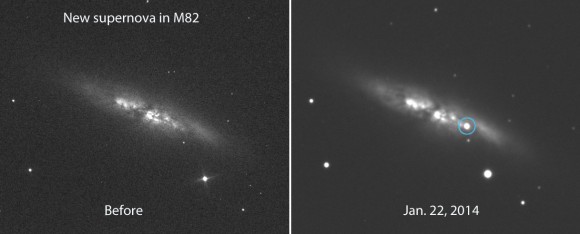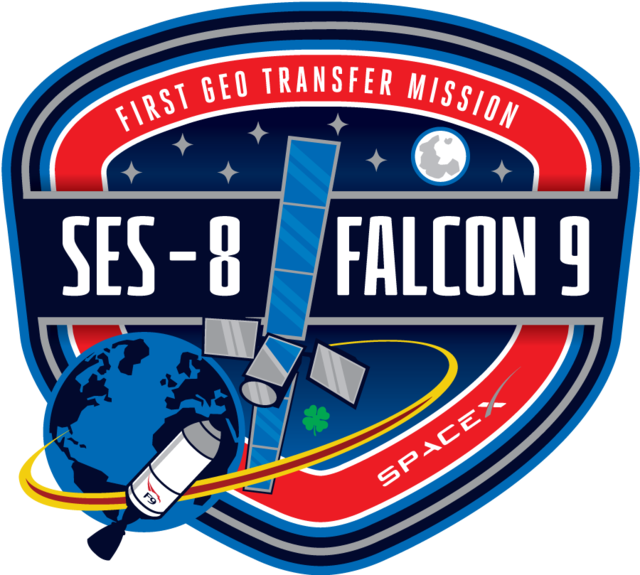Neil Young
- Steely_D - Apr 26, 2024 - 9:20am
NY Times Strands
- geoff_morphini - Apr 26, 2024 - 9:20am
NYTimes Connections
- geoff_morphini - Apr 26, 2024 - 9:08am
Wordle - daily game
- geoff_morphini - Apr 26, 2024 - 9:02am
SCOTUS
- Red_Dragon - Apr 26, 2024 - 9:01am
Country Up The Bumpkin
- KurtfromLaQuinta - Apr 26, 2024 - 9:01am
Breaking News
- Red_Dragon - Apr 26, 2024 - 8:24am
Australia has Disappeared
- Red_Dragon - Apr 26, 2024 - 6:39am
Today in History
- Red_Dragon - Apr 26, 2024 - 6:03am
Radio Paradise Comments
- miamizsun - Apr 26, 2024 - 5:09am
Environmental, Brilliance or Stupidity
- miamizsun - Apr 26, 2024 - 5:07am
The Obituary Page
- DaveInSaoMiguel - Apr 26, 2024 - 3:47am
Trump
- kcar - Apr 25, 2024 - 10:53pm
Joe Biden
- kurtster - Apr 25, 2024 - 9:24pm
Talk Behind Their Backs Forum
- islander - Apr 25, 2024 - 2:28pm
Things You Thought Today
- Manbird - Apr 25, 2024 - 2:12pm
Poetry Forum
- Manbird - Apr 25, 2024 - 12:30pm
Ask an Atheist
- R_P - Apr 25, 2024 - 11:02am
Mixtape Culture Club
- miamizsun - Apr 25, 2024 - 10:36am
Afghanistan
- R_P - Apr 25, 2024 - 10:26am
Israel
- R_P - Apr 25, 2024 - 10:06am
Science in the News
- Red_Dragon - Apr 25, 2024 - 10:00am
What the hell OV?
- miamizsun - Apr 25, 2024 - 9:46am
The Abortion Wars
- Isabeau - Apr 25, 2024 - 9:27am
Photography Forum - Your Own Photos
- Proclivities - Apr 25, 2024 - 7:33am
Vinyl Only Spin List
- ColdMiser - Apr 25, 2024 - 7:15am
What's that smell?
- Manbird - Apr 24, 2024 - 10:27pm
Song of the Day
- oldviolin - Apr 24, 2024 - 10:20pm
April 2024 Photo Theme - Happenstance
- oldviolin - Apr 24, 2024 - 9:50pm
260,000 Posts in one thread?
- NoEnzLefttoSplit - Apr 24, 2024 - 10:55am
Would you drive this car for dating with ur girl?
- rgio - Apr 24, 2024 - 8:44am
TV shows you watch
- Beaker - Apr 24, 2024 - 7:32am
The Moon
- haresfur - Apr 23, 2024 - 9:29pm
Dialing 1-800-Manbird
- Bill_J - Apr 23, 2024 - 7:15pm
China
- R_P - Apr 23, 2024 - 5:35pm
Economix
- islander - Apr 23, 2024 - 12:11pm
USA! USA! USA!
- R_P - Apr 23, 2024 - 11:05am
One Partying State - Wyoming News
- sunybuny - Apr 23, 2024 - 6:53am
YouTube: Music-Videos
- Red_Dragon - Apr 22, 2024 - 7:42pm
Ukraine
- haresfur - Apr 22, 2024 - 6:19pm
songs that ROCK!
- Steely_D - Apr 22, 2024 - 1:50pm
Bug Reports & Feature Requests
- q4Fry - Apr 22, 2024 - 11:57am
Republican Party
- R_P - Apr 22, 2024 - 9:36am
Mini Meetups - Post Here!
- ScottFromWyoming - Apr 22, 2024 - 8:59am
Malaysia
- dcruzj - Apr 22, 2024 - 7:30am
Canada
- westslope - Apr 22, 2024 - 6:23am
Russia
- NoEnzLefttoSplit - Apr 22, 2024 - 1:03am
Broccoli for cats - you gotta see this!
- Bill_J - Apr 21, 2024 - 6:16pm
Name My Band
- DaveInSaoMiguel - Apr 21, 2024 - 3:06pm
Main Mix Playlist
- thisbody - Apr 21, 2024 - 12:04pm
George Orwell
- oldviolin - Apr 21, 2024 - 11:36am
• • • The Once-a-Day • • •
- oldviolin - Apr 20, 2024 - 7:44pm
What Did You See Today?
- Welly - Apr 20, 2024 - 4:50pm
Radio Paradise on multiple Echo speakers via an Alexa Rou...
- victory806 - Apr 20, 2024 - 2:11pm
Libertarian Party
- R_P - Apr 20, 2024 - 11:18am
Remembering the Good Old Days
- kurtster - Apr 20, 2024 - 2:37am
Words I didn't know...yrs ago
- Bill_J - Apr 19, 2024 - 7:06pm
Things that make you go Hmmmm.....
- Bill_J - Apr 19, 2024 - 6:59pm
Baseball, anyone?
- Red_Dragon - Apr 19, 2024 - 6:51pm
MILESTONES: Famous People, Dead Today, Born Today, Etc.
- Bill_J - Apr 19, 2024 - 6:44pm
2024 Elections!
- steeler - Apr 19, 2024 - 5:49pm
how do you feel right now?
- miamizsun - Apr 19, 2024 - 6:02am
When I need a Laugh I ...
- miamizsun - Apr 19, 2024 - 5:43am
Live Music
- oldviolin - Apr 18, 2024 - 3:24pm
What Makes You Laugh?
- oldviolin - Apr 18, 2024 - 2:49pm
Robots
- miamizsun - Apr 18, 2024 - 2:18pm
Museum Of Bad Album Covers
- Steve - Apr 18, 2024 - 6:58am
Europe
- haresfur - Apr 17, 2024 - 6:47pm
Business as Usual
- black321 - Apr 17, 2024 - 1:48pm
Magic Eye optical Illusions
- Proclivities - Apr 17, 2024 - 10:08am
Just for the Haiku of it. . .
- oldviolin - Apr 17, 2024 - 9:01am
HALF A WORLD
- oldviolin - Apr 17, 2024 - 8:52am
Little known information... maybe even facts
- R_P - Apr 16, 2024 - 3:29pm
WTF??!!
- rgio - Apr 16, 2024 - 5:23am
Earthquake
- miamizsun - Apr 16, 2024 - 4:46am
|
|
Index »
Radio Paradise/General »
General Discussion »
NASA & other news from space
|
Page: Previous 1, 2, 3 ... 23, 24, 25 ... 34, 35, 36 Next |
R_P

Gender: 

|
|
Posted:
Jun 22, 2014 - 1:45pm |
|
|
|
R_P

Gender: 

|
|
Posted:
Jun 7, 2014 - 12:30pm |
|
‘Hello world!’ NASA beams video from ISS to Earth by laser (VIDEO) — RT NewsUS-based space agency NASA has managed to beam a HD video from the International Space Station to Earth using a new laser communications device. The ‘Hello World’ video was the first ever to “travel” via this technology. The technology used was the Optical Payload for Lasercomm Science (OPALS). It took OPALS 3.5 seconds to transmit the “Hello World!” video – the process would have taken more than 10 minutes to complete using the more traditional downlink process. (...)
|
|
ScottN

Location: Half inch above the K/T boundary
Gender: 

|
|
Posted:
Jun 2, 2014 - 11:46am |
|
 FREE DELIVERY FREE DELIVERY
|
|
R_P

Gender: 

|
|
Posted:
Jun 2, 2014 - 11:40am |
|
|
|
Prodigal_SOB

Location: Back Home Again in Indiana
Gender: 

|
|
Posted:
Mar 28, 2014 - 9:26am |
|
|
|
haresfur

Location: The Golden Triangle
Gender: 

|
|
Posted:
Mar 27, 2014 - 4:16pm |
|
|
|
R_P

Gender: 

|
|
Posted:
Feb 26, 2014 - 12:56pm |
|
NASA's Kepler Mission Announces a Planet Bonanza, 715 New WorldsNASA's Kepler mission announced Wednesday the discovery of 715 new planets. These newly-verified worlds orbit 305 stars, revealing multiple-planet systems much like our own solar system.
Nearly 95 percent of these planets are smaller than Neptune, which is almost four times the size of Earth. This discovery marks a significant increase in the number of known small-sized planets more akin to Earth than previously identified exoplanets, which are planets outside our solar system.
"The Kepler team continues to amaze and excite us with their planet hunting results," said John Grunsfeld, associate administrator for NASA's Science Mission Directorate in Washington. "That these new planets and solar systems look somewhat like our own, portends a great future when we have the James Webb Space Telescope in space to characterize the new worlds.”
Since the discovery of the first planets outside our solar system roughly two decades ago, verification has been a laborious planet-by-planet process. Now, scientists have a statistical technique that can be applied to many planets at once when they are found in systems that harbor more than one planet around the same star.
To verify this bounty of planets, a research team co-led by Jack Lissauer, planetary scientist at NASA's Ames Research Center in Moffett Field, Calif., analyzed stars with more than one potential planet, all of which were detected in the first two years of Kepler's observations — May 2009 to March 2011.
The research team used a technique called verification by multiplicity, which relies in part on the logic of probability. Kepler observes 150,000 stars, and has found a few thousand of those to have planet candidates. If the candidates were randomly distributed among Kepler's stars, only a handful would have more than one planet candidate. However, Kepler observed hundreds of stars that have multiple planet candidates. Through a careful study of this sample, these 715 new planets were verified.
This method can be likened to the behavior we know of lions and lionesses. In our imaginary savannah, the lions are the Kepler stars and the lionesses are the planet candidates. The lionesses would sometimes be observed grouped together whereas lions tend to roam on their own. If you see two lions it could be a lion and a lioness or it could be two lions. But if more than two large felines are gathered, then it is very likely to be a lion and his pride. Thus, through multiplicity the lioness can be reliably identified in much the same way multiple planet candidates can be found around the same star. (...)
|
|
R_P

Gender: 

|
|
Posted:
Feb 23, 2014 - 6:39am |
|
Big bang birthday: Six mysteries of a cosmic bombshell - space - New Scientist
(Image: NASA/WMAP Science Team) In 1964, a pair of engineers at Bell Labs in New Jersey tried to build a better antenna and ended up uncovering the origins of the universe. After ruling out city noise, nuclear bombs and pigeon poop, Arno Penzias and Robert Wilson argued that a strange radio hiss in their readings was the first confirmed signal of the cosmic microwave background (CMB). This relic glow emerged as a result of the big bang and now permeates the universe. The discovery solidified big bang theory as our best explanation for cosmic origins, and Penzias and Wilson went on to net a Nobel prize. Now, 50 years later, the CMB (pictured above) has helped us figure out the universe's age, shape and components, as well as details about how it has evolved. But with almost every discovery, the CMB raised new and more vexing questions. Here are six of the biggest lingering mysteries sparked by studies of the big bang. (...)
|
|
R_P

Gender: 

|
|
Posted:
Feb 20, 2014 - 12:49am |
|
European Space Agency picks Plato planet-hunting mission - Design calls for a suite of 34 telescopes to be mounted on a single satellite platform
- Mission should confirm and characterise hundreds of rocky worlds in habitable zones
- Its technology would have the sensitivity also to detect the planets' moons and rings
- Intricate measurements of the host stars (asteroseismology) would yield key information
- To launch from Sinnamary in French Guiana on a Soyuz rocket in 2023/2024
- Plato would be stationed 1.5 million km from Earth on its "nightside"
A telescope to find rocky worlds around other stars has been selected for launch by the European Space Agency's Science Policy Committee. Known as Plato, the mission should launch on a Soyuz rocket in 2024. The observatory concept was chosen following several years of assessment in competition with other ideas. It is expected to cost Esa just over 600 million euros, although hardware contributions from member states will take this closer to a billion (£800m). Astronomers have so far found over 1,000 planets beyond our Solar System, but none as yet has been shown to be truly Earth-like in terms of its size and distance from a Sun similar to our own. The PLAnetary Transits and Oscillations of stars mission will look to change that. It will be tuned specifically to seek out rocky worlds orbiting in the "habitable zone" - the region around a star where water can keep a liquid state. "Plato will be our first attempt to find nearby habitable planets around Sun-like stars that we can actually examine in sufficient detail to look for life," said Dr Don Pollacco, the University of Warwick researcher who leads the Plato Science Consortium. "Nearly all the small transiting planets discovered so far have been beyond our technology to characterise. Plato will be a game-changer, allowing many Earth-like planets to be detected and confirmed and their atmospheres examined for signs of life. "Plato planets will allow us to develop and test theories of planet evolution, understanding the type of small planets in the Universe and the real frequency of Earth-like planets," he told BBC News. Plato is not really one telescope but rather a suite of 34 telescopes mounted on a single satellite. The intention is for this array to sweep about half the sky, to investigate some of its brightest and nearest stars. The observatory will monitor these stars for the tell-tale tiny dips in light that occur when planets move across their faces. An important part of this investigation will be to perform an intricate study of the host stars themselves, using their pulsations to probe their structure and properties. Such observations, referred to as asteroseismology, would provide key, complementary information for the proper characterisation of the rocky worlds. The mission will be led by Dr Heike Rauer at DLR, the German space agency. The key British hardware contribution will be the camera system that sits behind the telescope suite. This will incorporate 136 charge-coupled devices (CCDs) produced by the e2v company in Chelmsford, Essex. Just under a metre square, the CCD system will be the biggest ever flown in space. Plato should prove to be a good fit with other next-generation astronomical facilities. These will include the ground-based European Extremely Large Telescope (E-ELT), which will have a primary mirror some 39m in diameter. To be built in Chile, this giant should be operating by 2024, and will have the power to investigate the atmospheres of the Plato's newly discovered planets. Plato is the third medium-class launch opportunity to be offered under Esa's so-called Cosmic Vision programme, which defines the organisation's space science priorities. The first two to be selected were Solar Orbiter, a space telescope to study the Sun, to launch in 2017; and Euclid, a telescope to investigate "dark energy", to fly in 2020. Esa will now refine the final design of Plato and find an industrial contractor to lead the construction of the satellite. The agency's national member states will need also to agree any contributions they wish to make over and above their mandatory commitments. Once all this is done, the mission will be formally "adopted" - legal-speak for "final go-ahead". This should happen within the next two years. The unanimous selection of Plato by the SPC on Wednesday will be immensely pleasing to the team behind the Eddington space telescope - an Esa mission to find distant planets and do asteroseismology that was cancelled due to budget woes in the early 2000s.
|
|
R_P

Gender: 

|
|
Posted:
Feb 17, 2014 - 12:48pm |
|
|
|
R_P

Gender: 

|
|
Posted:
Feb 14, 2014 - 12:28pm |
|
|
|
R_P

Gender: 

|
|
Posted:
Feb 11, 2014 - 8:31pm |
|
|
|
aflanigan

Location: At Sea
Gender: 

|
|
Posted:
Feb 6, 2014 - 7:23am |
|
What is NASA for?NASA is the panda of the U.S. government: a great big cuddly maladapted agency that's beloved by almost everyone—and that is flirting with extinction.
|
|
R_P

Gender: 

|
|
Posted:
Jan 23, 2014 - 6:55am |
|
Red_Dragon wrote:"New" being a relative term, considering it happened 12 million years ago.  Absolutely! 
|
|
Red_Dragon

Location: Dumbf*ckistan

|
|
Posted:
Jan 23, 2014 - 6:31am |
|
RichardPrins wrote: "New" being a relative term, considering it happened 12 million years ago. 
|
|
R_P

Gender: 

|
|
Posted:
Jan 23, 2014 - 6:23am |
|
|
|
R_P

Gender: 

|
|
Posted:
Jan 22, 2014 - 12:22pm |
|
|
|
R_P

Gender: 

|
|
Posted:
Jan 20, 2014 - 12:41pm |
|
|
|
R_P

Gender: 

|
|
PFM

Location: around here somewhere

|
|
Posted:
Nov 25, 2013 - 2:07pm |
|
PFM wrote: Launch set for 5:37P (Eastern)
|
|
|










